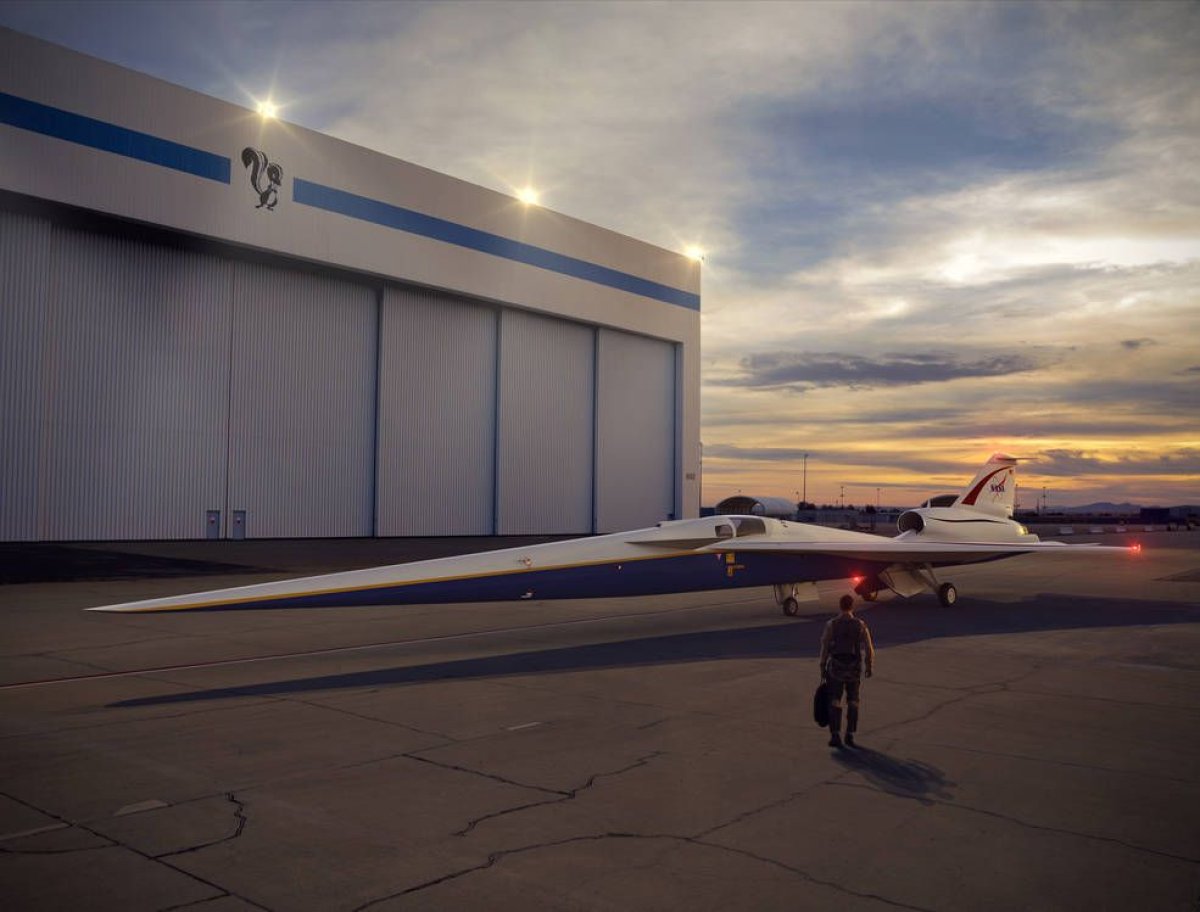NASA has hired airplane manufacturer Lockheed Martin to build its next experimental plane, which is designed to fly faster than the speed of sound without producing the loud sonic booms that have plagued the transportation form. The plane is due to be delivered in 2021 and will cost just shy of $250 million.
During a press conference hosted by the agency during which they announced the partnership, Lockheed Martin spokesperson Dave Richardson explained that the new plane will be neither a prototype for a new commercial airplane, nor a reincarnation of previous supersonic jets. "This is a purpose-built experimental research craft," he said. "This aircraft was designed from a clean sheet."
NASA will use the plane to gather data about the impact of its low-boom design, which the agency hopes will address the single biggest challenge of supersonic flight. Flying faster than the speed of sound produces shock waves that result in a loud booming sound. "The air does not know that the airplane is coming," Peter Coen, a NASA project manager for supersonic technology, explained during the press conference.
Related: Classified secrets: JFK files may be released but spy plane missions remain mysterious
Because no one liked hearing that noise, the Federal Aviation Administration and similar international organizations banned supersonic travel over land. Now, NASA thinks technology can break the sound barrier without being quite so loud about it.
The secret is in the shape of the plane. Sonic booms form because the plane's flight produces many shock waves of different strengths headed in different directions that absorb into each other to create two strong pulses of pressure.
From the testing done so far, NASA thinks the new plane's design successfully dissipates and weakens those shock waves, keeping them from forming the strong pulses responsible for booms. The plane would still produce what they've dubbed "sonic thumps," but the hope is that those would be much easier to deal with.

Once the new plane is built, NASA will run surveys on the ground to see how people respond to the sonic thumps. Then, the agency will bring that survey data to the Federal Aviation Administration and its international counterparts in order to revisit the rule about breaking the speed of sound over land.
"It's not about making a new airplane for airplanes' sake, although I love airplanes," Richardson said. "It's about the data that will be collected."
If the rule change does come through, that could kick off a new era of commercial supersonic travel.
Uncommon Knowledge
Newsweek is committed to challenging conventional wisdom and finding connections in the search for common ground.
Newsweek is committed to challenging conventional wisdom and finding connections in the search for common ground.
About the writer
Meghan Bartels is a science journalist based in New York City who covers the science happening on the surface of ... Read more
To read how Newsweek uses AI as a newsroom tool, Click here.






